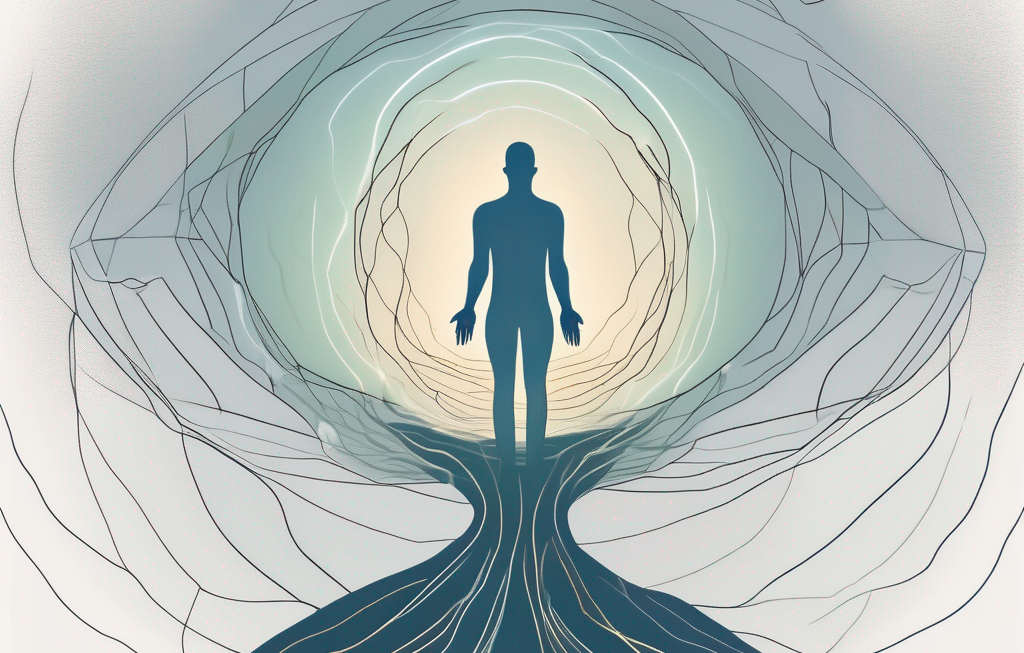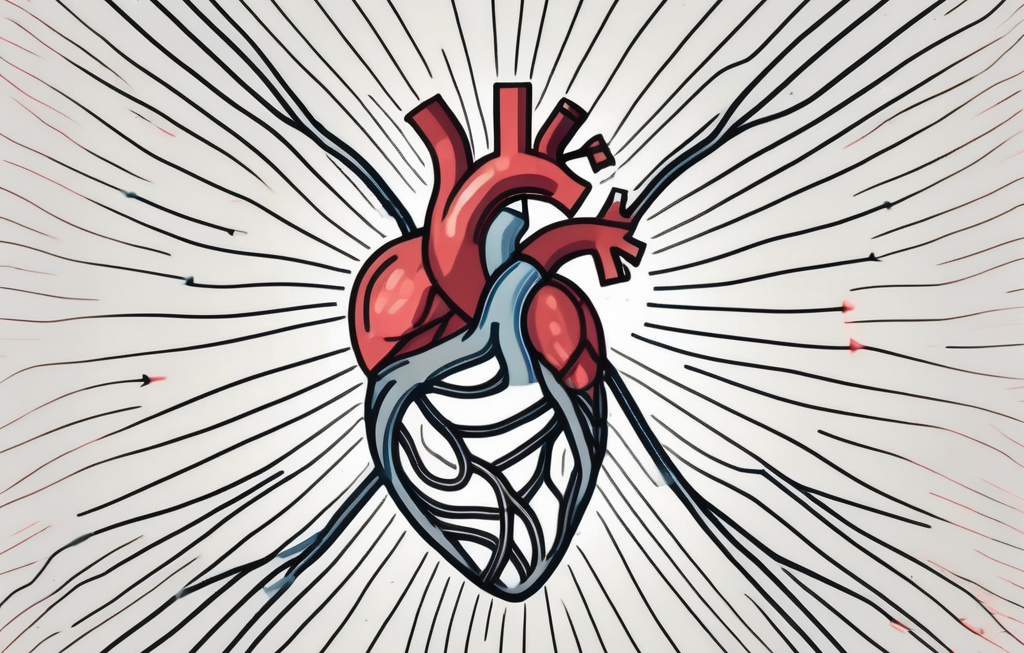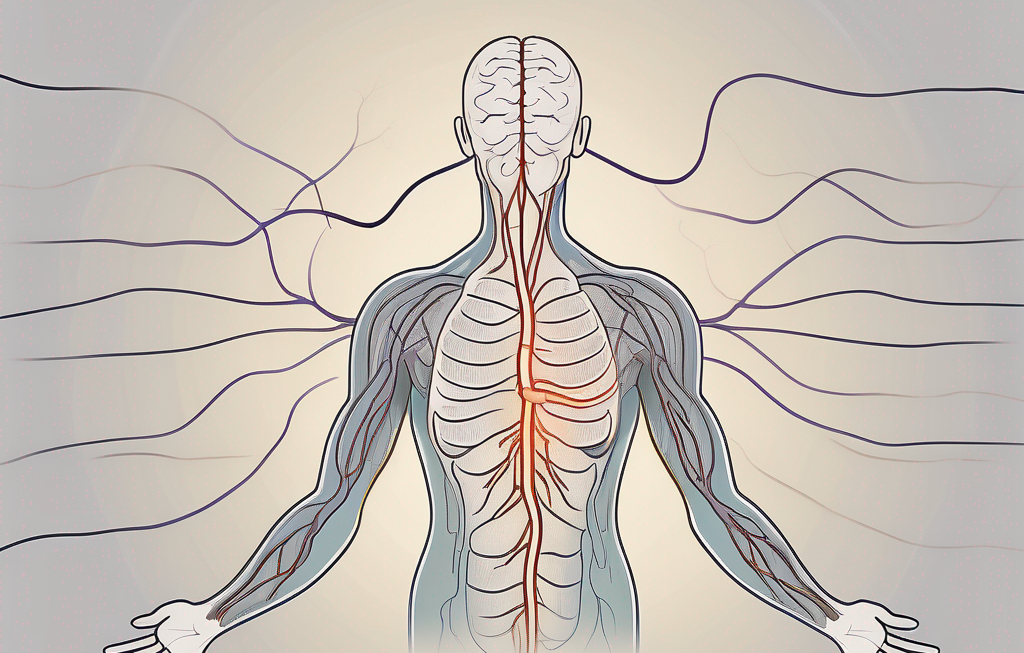Dorsal Vagal Shutdown is a complex physiological response that can occur in times of extreme stress or trauma. Understanding this phenomenon and its impact on the body is crucial in finding ways to heal and overcome its effects. In this article, we will explore the science behind Dorsal Vagal Shutdown and discuss therapeutic approaches and self-care strategies that can help individuals manage and prevent future episodes.
Understanding Dorsal Vagal Shutdown
Dorsal Vagal Shutdown refers to a physiological state in which the body’s nervous system activates the dorsal branch of the vagus nerve, leading to a shutdown of key bodily functions. This shutdown, also known as a freeze response, is an adaptive mechanism that is triggered in life-threatening situations to help us survive.
When faced with a perceived threat, the body’s sympathetic nervous system initiates the fight-or-flight response, preparing the individual to either confront the danger or flee from it. However, in cases where the threat is overwhelming or inescapable, the dorsal branch of the vagus nerve takes over, inducing a state of immobility and shutdown.
The Role of the Vagus Nerve in the Body
The vagus nerve, also known as the tenth cranial nerve, plays a crucial role in regulating many bodily functions, including heart rate, digestion, and inflammation. It consists of various branches, including the dorsal branch, which is responsible for initiating the freeze response during extreme stress or trauma.
Aside from its role in dorsal vagal shutdown, the vagus nerve is also involved in promoting relaxation and restorative processes in the body. Stimulation of the vagus nerve has been shown to reduce inflammation, improve heart rate variability, and enhance overall well-being.
What Triggers Dorsal Vagal Shutdown
Dorsal Vagal Shutdown can be triggered by a variety of factors, including physical or emotional trauma, chronic stress, or a perceived threat to one’s safety. Individuals who have experienced childhood abuse, neglect, or other traumatic events are particularly susceptible to this response.
In addition to external triggers, internal factors such as chronic illness, autoimmune disorders, or prolonged periods of isolation can also precipitate dorsal vagal shutdown. Understanding the complex interplay between the nervous system and environmental stimuli is crucial in addressing and managing this physiological response.
Symptoms and Signs of Dorsal Vagal Shutdown
The symptoms and signs of Dorsal Vagal Shutdown can vary from person to person, but there are some common indicators to be aware of.
Dorsal Vagal Shutdown, also known as the “freeze” response, is a physiological reaction that occurs in response to extreme stress or danger. This response is mediated by the dorsal vagal complex in the brainstem, which plays a crucial role in regulating the body’s autonomic nervous system. When activated, this response can lead to a cascade of physical and emotional symptoms that can be distressing and overwhelming for the individual.
Physical Symptoms
During a dorsal vagal shutdown, individuals may experience physical symptoms such as a slowed heart rate, shallow breathing, muscle tension, and a feeling of heaviness in the body. These physical manifestations are the body’s way of conserving energy and protecting itself from potential harm.
In addition to the physical symptoms mentioned, some individuals may also experience digestive issues, such as stomach pain, nausea, or changes in appetite. These gastrointestinal symptoms are a common manifestation of the body’s stress response and can further exacerbate the feelings of discomfort and unease during a dorsal vagal shutdown.
Emotional and Psychological Signs
On an emotional level, individuals may experience feelings of dissociation, detachment, or numbness during a dorsal vagal shutdown. They may also have difficulty concentrating, experience memory gaps, or struggle with regulating their emotions. It is important to note that these signs can also be indicative of other mental health conditions, so a thorough evaluation is necessary for an accurate diagnosis.
Furthermore, individuals experiencing a dorsal vagal shutdown may also exhibit symptoms of hypervigilance, where they are constantly on edge and alert for potential threats. This heightened state of arousal can be exhausting and can further contribute to the overall sense of fatigue and depletion experienced during this physiological response.
The Science Behind Healing Dorsal Vagal Shutdown
Healing from Dorsal Vagal Shutdown involves understanding the role of neuroplasticity and embracing the principles of the Polyvagal Theory.
Dorsal Vagal Shutdown is a complex physiological response that can occur in situations of extreme stress or trauma. It is characterized by a state of immobilization, dissociation, and disconnection from the external environment. Individuals experiencing Dorsal Vagal Shutdown may feel overwhelmed, numb, or detached as their body’s innate defense mechanism kicks in to protect them from perceived threats.
The Role of Neuroplasticity in Healing
Neuroplasticity refers to the brain’s ability to change and rewire itself in response to new experiences and learning. By engaging in various therapeutic approaches and self-care strategies, individuals can foster neuroplasticity and promote healing from Dorsal Vagal Shutdown.
Therapeutic modalities such as mindfulness practices, somatic experiencing, and trauma-focused cognitive behavioral therapy can help rewire neural pathways, allowing individuals to regulate their nervous system and manage stress responses more effectively. These interventions not only promote healing from Dorsal Vagal Shutdown but also enhance overall well-being and resilience.
The Importance of the Polyvagal Theory
The Polyvagal Theory, developed by Dr. Stephen Porges, provides valuable insights into the autonomic nervous system’s response to stress and trauma. It explains how the body moves between different physiological states, including the shutdown response. Understanding this theory can guide therapeutic interventions and help individuals regain a sense of safety and regulation.
By recognizing the role of the vagus nerve in regulating social engagement, fight-or-flight responses, and shutdown states, individuals can learn to cultivate a sense of safety and connection in their bodies. Practices such as deep breathing, progressive muscle relaxation, and social engagement exercises can help activate the ventral vagal complex, promoting feelings of calm and connection. Through a combination of neuroplasticity-informed interventions and Polyvagal Theory principles, individuals can embark on a journey of healing and transformation from Dorsal Vagal Shutdown.
Therapeutic Approaches to Heal Dorsal Vagal Shutdown
Several therapeutic approaches have shown promise in healing Dorsal Vagal Shutdown. Among these approaches are Somatic Experiencing Therapy and Eye Movement Desensitization and Reprocessing (EMDR).
Somatic Experiencing Therapy
Somatic Experiencing Therapy focuses on releasing stored trauma and restoring the body’s natural capacity for self-regulation. By gently exploring bodily sensations, emotions, and memories associated with the freeze response, individuals can gradually release the trapped energy and find healing.
During Somatic Experiencing Therapy sessions, trained therapists guide individuals in tracking their bodily sensations and noticing any areas of tension or discomfort. By bringing awareness to these sensations and exploring the underlying emotions, individuals can begin to unravel the patterns of dorsal vagal shutdown and cultivate a sense of safety and connection within themselves.
Eye Movement Desensitization and Reprocessing (EMDR)
EMDR is a therapeutic approach that utilizes bilateral stimulation, typically through eye movements, to help individuals process and resolve traumatic memories. This therapeutic method can help alleviate the effects of dorsal vagal shutdown by promoting the integration of fragmented memories and emotions.
During EMDR sessions, individuals are guided to recall distressing memories while simultaneously engaging in bilateral stimulation, such as following the therapist’s hand movements with their eyes. This dual attention process helps the brain reprocess the traumatic memories, allowing for new associations to form and reducing the emotional charge associated with the past experiences.
Self-Care Strategies for Managing Dorsal Vagal Shutdown
In addition to therapeutic approaches, self-care strategies can play a vital role in managing Dorsal Vagal Shutdown on a day-to-day basis.
Understanding the triggers and manifestations of Dorsal Vagal Shutdown is crucial in developing an effective self-care plan. By recognizing the signs of impending shutdown, individuals can proactively engage in strategies to prevent or mitigate its effects. This heightened self-awareness can empower individuals to take control of their well-being and navigate challenging situations with greater resilience.
Mindfulness and Meditation Techniques
Practicing mindfulness and meditation can help individuals develop a greater awareness of their body sensations, emotions, and thoughts. These techniques can provide a sense of grounding and help regulate the nervous system, reducing the frequency and intensity of dorsal vagal shutdown episodes.
Exploring different types of mindfulness practices, such as body scans, loving-kindness meditation, or mindful breathing, can offer individuals a variety of tools to incorporate into their self-care routine. By cultivating a non-judgmental awareness of the present moment, individuals can foster a sense of calm and resilience in the face of stressors that may trigger dorsal vagal shutdown.
Physical Exercise and Yoga
Engaging in regular physical exercise, such as cardio or strength training, can have significant benefits for managing dorsal vagal shutdown. Exercise helps release endorphins, improve mood, and regulate the nervous system. Incorporating yoga into one’s routine can also be particularly beneficial, as it combines physical movement with deep breathing and relaxation techniques.
Yoga practices that focus on gentle poses, breathwork, and mindfulness can help individuals reconnect with their bodies and cultivate a sense of inner peace. The integration of movement and breath in yoga can promote a state of relaxation and activate the body’s relaxation response, counteracting the physiological effects of stress and dorsal vagal shutdown. By incorporating yoga into their self-care regimen, individuals can enhance their overall well-being and resilience in the face of adversity.
Preventing Future Dorsal Vagal Shutdown
Preventing future dorsal vagal shutdown episodes requires a proactive approach to stress management and building resilience against trauma. Understanding the triggers and signs of dorsal vagal shutdown is essential in developing an effective prevention plan.
Dorsal vagal shutdown, also known as the freeze response, is a physiological reaction to extreme stress or trauma. It is characterized by a sudden loss of connection with the outside world, leading to feelings of numbness, dissociation, and immobilization. Recognizing the early warning signs of dorsal vagal shutdown, such as increased heart rate, shallow breathing, and muscle tension, can help individuals intervene before a full shutdown occurs.
Stress Management Techniques
Developing effective stress management techniques is crucial in preventing dorsal vagal shutdown. This may include engaging in activities that promote relaxation, such as taking regular breaks, practicing deep breathing exercises, or seeking support from loved ones or a therapist. Mindfulness practices, such as meditation and yoga, can also help regulate the nervous system and reduce the likelihood of a shutdown response.
Building Resilience Against Trauma
Building resilience against trauma involves developing healthy coping mechanisms, cultivating a strong support network, and seeking professional help if needed. Building resilience is an ongoing process that can help individuals recover from trauma and reduce the likelihood of future dorsal vagal shutdown episodes. It is important to address past traumas through therapy or counseling to prevent them from triggering future shutdowns.
Additionally, engaging in activities that promote self-care and self-compassion can strengthen resilience and provide a buffer against the impact of stress and trauma. Regular exercise, adequate sleep, and healthy nutrition are all important factors in maintaining emotional and physical well-being. By prioritizing self-care and seeking help when needed, individuals can build the resilience needed to prevent future dorsal vagal shutdown episodes.
Seeking Professional Help for Dorsal Vagal Shutdown
While self-care strategies and therapeutic approaches can be beneficial, it is important to recognize when professional help is necessary. Understanding the complexities of dorsal vagal shutdown and its impact on one’s physical and emotional well-being is crucial in seeking appropriate support.
When experiencing frequent or severe dorsal vagal shutdown episodes that significantly impact your daily life, consulting a healthcare professional is essential. These professionals can conduct a thorough evaluation, taking into account your medical history, symptoms, and individual circumstances to provide personalized guidance and recommend suitable treatment options.
When to Consult a Healthcare Professional
If you notice persistent physiological responses such as immobilization, dissociation, or feelings of helplessness associated with dorsal vagal shutdown, seeking timely intervention can prevent further distress and promote recovery. Healthcare professionals, including therapists, psychologists, or psychiatrists, can offer specialized care to address the underlying causes of this autonomic nervous system response.
Finding the Right Therapist for You
When seeking therapy for dorsal vagal shutdown, it is crucial to find a therapist who specializes in trauma-informed care and has extensive experience in treating individuals with similar experiences. Conducting thorough research, seeking recommendations from trusted sources, and scheduling initial consultations can aid in identifying a therapist who aligns with your therapeutic goals and fosters a safe healing environment.
By delving into the intricate science behind Dorsal Vagal Shutdown and integrating evidence-based therapeutic approaches and self-care strategies, individuals can embark on a transformative healing journey towards reclaiming their emotional and physical well-being. Embracing the uniqueness of each person’s healing process, it is important to practice self-compassion, patience, and resilience while navigating the complexities of recovery. Remember, seeking support and professional guidance is a proactive step towards holistic healing and empowerment.



